MaryAnn Bernal's Blog, page 353
November 13, 2013
Little Sugar Plums: The Adventures of Cecilia Spark - Creator of The Cecilia Spark Doll
Little Sugar Plums: The Adventures of Cecilia Spark: I am incredibly proud of my latest achievement!A few weeks ago I received an order from the wonderful, talented Ngaire Elder; author of The...


Published on November 13, 2013 09:23
Literary treat: Children's author Ngaire Elder, writer of The Adventures of Cecilia Spark, visited Seeley Primary School, Sherwood
Pupils hear character's exploits told by authorBy Nottingham Post | Posted: November 06, 2013

Literary treat: Children's author Ngaire Elder, writer of The Adventures of Cecilia Spark, visited Seeley Primary School, Sherwood, this week. A natural storyteller, her love of animals is reflected in her work. Born in Glasgow, as a child she wrote plays just for fun. She is pictured reading extracts of her book to Seeley youngsters Lauryn Powell and Dermot Burke, both aged ten.
Read more: http://www.nottinghampost.com/Pupils-hear-character-s-exploits-told-author/story-20038656-detail/story.html#ixzz2kXa8yqzi
Amazon UK
http://www.amazon.co.uk/Ngaire-Elder/e/B006VXOUN8/ref=ntt_athr_dp_pel_1
Amazon US
http://www.amazon.com/Ngaire-Elder/e/B006VXOUN8/ref=ntt_athr_dp_pel_pop_1

Literary treat: Children's author Ngaire Elder, writer of The Adventures of Cecilia Spark, visited Seeley Primary School, Sherwood, this week. A natural storyteller, her love of animals is reflected in her work. Born in Glasgow, as a child she wrote plays just for fun. She is pictured reading extracts of her book to Seeley youngsters Lauryn Powell and Dermot Burke, both aged ten.
Read more: http://www.nottinghampost.com/Pupils-hear-character-s-exploits-told-author/story-20038656-detail/story.html#ixzz2kXa8yqzi
Amazon UK
http://www.amazon.co.uk/Ngaire-Elder/e/B006VXOUN8/ref=ntt_athr_dp_pel_1
Amazon US
http://www.amazon.com/Ngaire-Elder/e/B006VXOUN8/ref=ntt_athr_dp_pel_pop_1
Published on November 13, 2013 07:43
Big Holiday Giveaway - Kim Scott Books - November 12 - December 10, 2013
http://www.kimscottbooks.com/giveaway

This Giveaway begins November12th & Ends December 10th
Please enter only 1 time. All re-entries will be deleted before drawing. If you have any trouble with your entry email it to kimscott@kimscottbooks.com and it WILL be included. http://www.kimscottbooks.com/giveaway

This Giveaway begins November12th & Ends December 10th
Please enter only 1 time. All re-entries will be deleted before drawing. If you have any trouble with your entry email it to kimscott@kimscottbooks.com and it WILL be included. http://www.kimscottbooks.com/giveaway
Published on November 13, 2013 07:24
The Wizard of Notts Recommends: Bob White: The five unsolved mysteries of Robin Hood
http://www.nottinghampost.com/Bob-White-unsolved-mysteries-Robin-Hood/story-20062768-detail/story.html?ito=email_newsletter_nottinghampost
Bob White: The five unsolved mysteries of Robin HoodBy Nottingham Post | Posted: November 13, 2013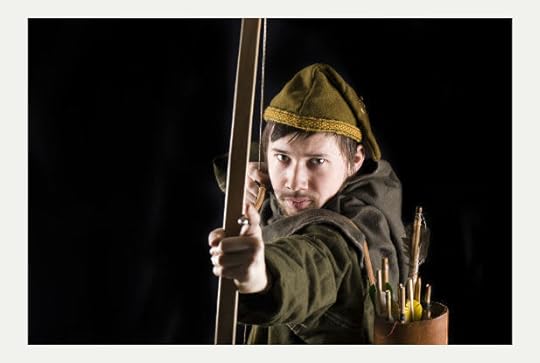 Mysterious tales and missing artefacts are the stuff that legends are made of. Here Bob White, chairman of the World Wide Robin Hood Society, looks at the five unsolved mysteries which surrounding the Nottinghamshire outlaw
Mysterious tales and missing artefacts are the stuff that legends are made of. Here Bob White, chairman of the World Wide Robin Hood Society, looks at the five unsolved mysteries which surrounding the Nottinghamshire outlaw

1. The remains of the ‘Fifteen Foresters’
One of the most mystifying occurrences relates to the ballad in which Robin kills the ‘Fifteen Foresters’ who refused to pay him the wager that he won fairly with his archery skills.The last verse states:
“They carried these foresters into fair Nottingham, as many there did know; They digged them graves in their church-yard and they buried them all in a row”.
Then, according to the historian Joseph Ritson, the following extract appeared in ‘The Star’ (probably a Sheffield newspaper) on April 23, 1796: “A few days ago, as some labourers were digging in a garden at Fox-lane, near Nottingham, they discovered six human skeletons entire, deposited in regular order side by side, supposed to be part of the fifteen foresters that were killed by Robin Hood.”
The news story goes on to say that the garden stood on the site of an ancient church that had been dedicated to St Michael and had been totally demolished in the Reformation ,so no doubt the bones had been properly buried in the churchyard.
The proprietor of the garden ordered the pit where the bodies were found to be filled up, “being unwilling to disturb the relics of humanity and the ashes of the dead!”
The original site of St Michael’s church and its graveyard secrets have never since been discovered.
2. Robin Hood’s personal belongings
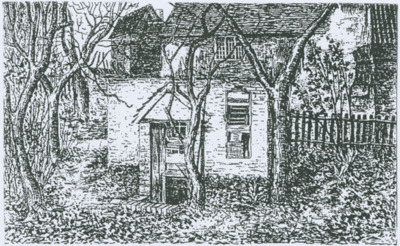
The location of St Ann’s Well in the Wells Road, St Ann’s, is the site of a buried “treasure” connected to the Robin Hood legend. Known over the centuries as Robynhode’s Well, this holy well was linked to a charitable hermitage run by the Brothers of Lazarus, who were associated with the Knights Templar.
Its spring water was believed to have substantial healing properties; and an additional attraction was a selection of artefacts, including Robin Hood’s bow, cap, chair, arrows, boots and bottle.
During the 17th and 18th centuries, it was one of the most popular tourist attractions in England and remained so until 1825, when it had its liquor licence withdrawn and the Robin Hood artefacts were sold at auction to Lionel Raynor, a famous actor on the London stage.
Before moving to America, he was said to have offered the items to the British Museum but they can find no record. A tea room operated on the site until 1855 and when the buildings at the well site were subsequently demolished, the town council commissioned a gothic style ornamental monument to mark the spot; but in 1887 it was taken down by the Great Northern Railway to accommodate the 30ft deep foundations of an essential bridge.
One hundred years later, local historian David Greenwood sank a shaft behind The Gardeners public house which had been built at the site and confirmed that the well was still there, saying: “It’s a treasure trove waiting for the next person with the nerve and the money to fully excavate it.”
3. Robin’s Cave
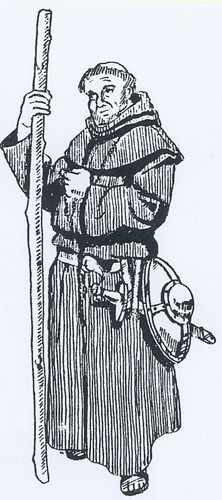
Another local story, that claims to have located Robin Hood’s hideout, is highlighted in actor Sir Bernard Miles’ 1979 book about the outlaw hero, ‘Robin Hood: His Life and Legend’.
In the epilogue, he refers to an incident in the 1820s when, somewhere near Bolsover in Derbyshire, two pitmen were sinking a shaft for a new coalmine when the earth alongside them fell away revealing a yawning gap through which there was a fireplace full of wood ash, cooking pots and utensils, blacksmiths tools and a storeroom with sacks and barrels.
Against one wall was a rack of bows, broadswords and quivers full of arrows and at the end of one of the galleries was a tiny chapel with a cross still on the altar. The miners then found a skeleton wrapped in an old woollen habit, lying at the base of a flat wall with one hand holding a crucifix and the other a chisel.
A long list of names was roughly scratched on the cavern wall and painfully scored at the bottom was: “I was the last – Michael Tuck.”
The skeleton was supposedly Friar Tuck’s, who appeared to have just managed to crawl there and scratch these few words before he collapsed and died.
As the two miners climbed out of the shaft they had cut, to tell the world about what they had found, it triggered a huge rock fall that totally buried everything under hundreds of tons of stone, and the story of their amazing discovery became just another local legend.
However, Sir Bernard claimed that Robin’s cave is still there, only a little way below the ground, close to one of the worked-out pits and that “one fine day it will be found again”.
4. The missing manuscript
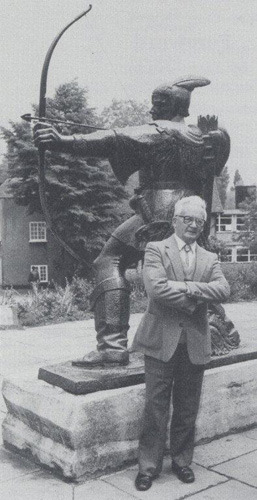
For many years, local historian and Robin Hood enthusiast, Jim Lees, worked tirelessly to prove that the legendary outlaw was born in Nottingham and believed that a lost ancient manuscript was the missing link in the quest.
The authentic, historical document was said to record a court appearance by Robert de Kyme, a nobleman born in what is now known as Bilborough – and actually referred to him as Robin Hood.
Mr Lees stated that the ancient court record was the most conclusive piece of evidence in existence that proved that “Robin Hood was real, that he was a local man and that Robin Hood was only a nickname.”
He said that Robert de Kyme was well documented in local archives and he was 99% certain that de Kyme and Robin Hood were one and the same, as their lives ran virtually parallel.
The missing document was believed to be in the possession of a former research scholar who had previously been at the University of Nottingham and who they only knew as a Mr McJohnson.
Having failed on numerous occasions to track down the elusive academic, with the technological birth of the internet Mr Lees enlisted the help of his nephew, Robert Henshaw, and put out a global appeal to try to make contact with Mr McJohnson and hopefully trace the whereabouts of the vital document that he believed held the key to historically proving that Robin Hood really had existed and was born in Nottingham. However, the task proved to be the proverbial “needle in a haystack” and to date, neither Mr. McJohnson or the ancient manuscript have ever come to light.
5. Little John’s longbow
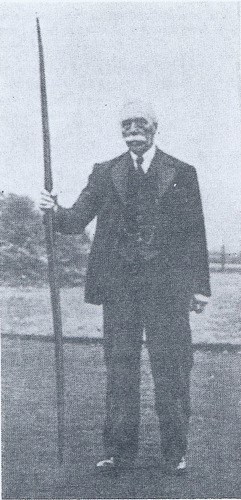
Local tradition has it that Little John’s Cottage was once situated on Peafield Lane, between Mansfield Woodhouse and Edwinstowe, near the site of the old Roman Road, but its precise location cannot be authenticated. Mockingly called Little John because of his tall, heavy stature, he was in fact John Nailer (Naylor), a nail maker originally called John of the Little.
After Robin Hood’s death at Kirklees Abbey in Yorkshire, Little John returned to the village of Cromwell, near Newark, where he was said to have been given lands by Alan-a-Dale.
His grave is in Hathersage in Derbyshire in the churchyard of St Michael’s and All Angel’s – but his trusty longbow is another of those “lost treasures” of the Robin Hood legend that seems to have disappeared.
The 6ft 7in bow was made of spliced yew, tipped with horn and needed a pull of 160 pounds to draw it. Originally brought to Cannon Hall, near Barnsley, in 1729 it apparently hung on display there until the late 1960s, when on the death of the last owner of the hall, a Mrs Elizabeth Frazer it was given to the Wakefield Museum.
However, Mrs Frazer’s son later took it to a manor house in Scotland where he died in 2004 and the current whereabouts of the bow remain a mystery.
Read more: http://www.nottinghampost.com/Bob-White-unsolved-mysteries-Robin-Hood/story-20062768-detail/story.html?ito=email_newsletter_nottinghampost#ixzz2kXMPrRbb
Bob White: The five unsolved mysteries of Robin HoodBy Nottingham Post | Posted: November 13, 2013
 Mysterious tales and missing artefacts are the stuff that legends are made of. Here Bob White, chairman of the World Wide Robin Hood Society, looks at the five unsolved mysteries which surrounding the Nottinghamshire outlaw
Mysterious tales and missing artefacts are the stuff that legends are made of. Here Bob White, chairman of the World Wide Robin Hood Society, looks at the five unsolved mysteries which surrounding the Nottinghamshire outlaw
1. The remains of the ‘Fifteen Foresters’
One of the most mystifying occurrences relates to the ballad in which Robin kills the ‘Fifteen Foresters’ who refused to pay him the wager that he won fairly with his archery skills.The last verse states:
“They carried these foresters into fair Nottingham, as many there did know; They digged them graves in their church-yard and they buried them all in a row”.
Then, according to the historian Joseph Ritson, the following extract appeared in ‘The Star’ (probably a Sheffield newspaper) on April 23, 1796: “A few days ago, as some labourers were digging in a garden at Fox-lane, near Nottingham, they discovered six human skeletons entire, deposited in regular order side by side, supposed to be part of the fifteen foresters that were killed by Robin Hood.”
The news story goes on to say that the garden stood on the site of an ancient church that had been dedicated to St Michael and had been totally demolished in the Reformation ,so no doubt the bones had been properly buried in the churchyard.
The proprietor of the garden ordered the pit where the bodies were found to be filled up, “being unwilling to disturb the relics of humanity and the ashes of the dead!”
The original site of St Michael’s church and its graveyard secrets have never since been discovered.
2. Robin Hood’s personal belongings

The location of St Ann’s Well in the Wells Road, St Ann’s, is the site of a buried “treasure” connected to the Robin Hood legend. Known over the centuries as Robynhode’s Well, this holy well was linked to a charitable hermitage run by the Brothers of Lazarus, who were associated with the Knights Templar.
Its spring water was believed to have substantial healing properties; and an additional attraction was a selection of artefacts, including Robin Hood’s bow, cap, chair, arrows, boots and bottle.
During the 17th and 18th centuries, it was one of the most popular tourist attractions in England and remained so until 1825, when it had its liquor licence withdrawn and the Robin Hood artefacts were sold at auction to Lionel Raynor, a famous actor on the London stage.
Before moving to America, he was said to have offered the items to the British Museum but they can find no record. A tea room operated on the site until 1855 and when the buildings at the well site were subsequently demolished, the town council commissioned a gothic style ornamental monument to mark the spot; but in 1887 it was taken down by the Great Northern Railway to accommodate the 30ft deep foundations of an essential bridge.
One hundred years later, local historian David Greenwood sank a shaft behind The Gardeners public house which had been built at the site and confirmed that the well was still there, saying: “It’s a treasure trove waiting for the next person with the nerve and the money to fully excavate it.”
3. Robin’s Cave

Another local story, that claims to have located Robin Hood’s hideout, is highlighted in actor Sir Bernard Miles’ 1979 book about the outlaw hero, ‘Robin Hood: His Life and Legend’.
In the epilogue, he refers to an incident in the 1820s when, somewhere near Bolsover in Derbyshire, two pitmen were sinking a shaft for a new coalmine when the earth alongside them fell away revealing a yawning gap through which there was a fireplace full of wood ash, cooking pots and utensils, blacksmiths tools and a storeroom with sacks and barrels.
Against one wall was a rack of bows, broadswords and quivers full of arrows and at the end of one of the galleries was a tiny chapel with a cross still on the altar. The miners then found a skeleton wrapped in an old woollen habit, lying at the base of a flat wall with one hand holding a crucifix and the other a chisel.
A long list of names was roughly scratched on the cavern wall and painfully scored at the bottom was: “I was the last – Michael Tuck.”
The skeleton was supposedly Friar Tuck’s, who appeared to have just managed to crawl there and scratch these few words before he collapsed and died.
As the two miners climbed out of the shaft they had cut, to tell the world about what they had found, it triggered a huge rock fall that totally buried everything under hundreds of tons of stone, and the story of their amazing discovery became just another local legend.
However, Sir Bernard claimed that Robin’s cave is still there, only a little way below the ground, close to one of the worked-out pits and that “one fine day it will be found again”.
4. The missing manuscript

For many years, local historian and Robin Hood enthusiast, Jim Lees, worked tirelessly to prove that the legendary outlaw was born in Nottingham and believed that a lost ancient manuscript was the missing link in the quest.
The authentic, historical document was said to record a court appearance by Robert de Kyme, a nobleman born in what is now known as Bilborough – and actually referred to him as Robin Hood.
Mr Lees stated that the ancient court record was the most conclusive piece of evidence in existence that proved that “Robin Hood was real, that he was a local man and that Robin Hood was only a nickname.”
He said that Robert de Kyme was well documented in local archives and he was 99% certain that de Kyme and Robin Hood were one and the same, as their lives ran virtually parallel.
The missing document was believed to be in the possession of a former research scholar who had previously been at the University of Nottingham and who they only knew as a Mr McJohnson.
Having failed on numerous occasions to track down the elusive academic, with the technological birth of the internet Mr Lees enlisted the help of his nephew, Robert Henshaw, and put out a global appeal to try to make contact with Mr McJohnson and hopefully trace the whereabouts of the vital document that he believed held the key to historically proving that Robin Hood really had existed and was born in Nottingham. However, the task proved to be the proverbial “needle in a haystack” and to date, neither Mr. McJohnson or the ancient manuscript have ever come to light.
5. Little John’s longbow

Local tradition has it that Little John’s Cottage was once situated on Peafield Lane, between Mansfield Woodhouse and Edwinstowe, near the site of the old Roman Road, but its precise location cannot be authenticated. Mockingly called Little John because of his tall, heavy stature, he was in fact John Nailer (Naylor), a nail maker originally called John of the Little.
After Robin Hood’s death at Kirklees Abbey in Yorkshire, Little John returned to the village of Cromwell, near Newark, where he was said to have been given lands by Alan-a-Dale.
His grave is in Hathersage in Derbyshire in the churchyard of St Michael’s and All Angel’s – but his trusty longbow is another of those “lost treasures” of the Robin Hood legend that seems to have disappeared.
The 6ft 7in bow was made of spliced yew, tipped with horn and needed a pull of 160 pounds to draw it. Originally brought to Cannon Hall, near Barnsley, in 1729 it apparently hung on display there until the late 1960s, when on the death of the last owner of the hall, a Mrs Elizabeth Frazer it was given to the Wakefield Museum.
However, Mrs Frazer’s son later took it to a manor house in Scotland where he died in 2004 and the current whereabouts of the bow remain a mystery.
Read more: http://www.nottinghampost.com/Bob-White-unsolved-mysteries-Robin-Hood/story-20062768-detail/story.html?ito=email_newsletter_nottinghampost#ixzz2kXMPrRbb
Published on November 13, 2013 06:47
The Phil Naessens Show 11-13-2013 Wednesday Night November 13th NBA Previews
http://phillipnaessens.wordpress.com/2013/11/13/the-phil-naessens-show-11-13-2013-wednesday-night-november-13th-nba-previews/
 Segment 1: Welcome to Loud City lead writer Zeb Benbrook joins Phil to preview Wednesday’s NBA games including; OKC Thunder/Los Angeles Clippers, New Orleans/Utah, Houston/Philadelphia, Toronto/Memphis, Los Angeles Lakers/Denver, Charlotte/Boston and much more.
Segment 1: Welcome to Loud City lead writer Zeb Benbrook joins Phil to preview Wednesday’s NBA games including; OKC Thunder/Los Angeles Clippers, New Orleans/Utah, Houston/Philadelphia, Toronto/Memphis, Los Angeles Lakers/Denver, Charlotte/Boston and much more.
Segment 2: Pounding the Rock lead writer Aaron Stampler joins Phil to preview Wednesday’s NBA games including; Washington/San Antonio, New York/Atlanta, Milwaukee/Orlando, Brooklyn/Sacramento, Cleveland/Minnesota, Phoenix/Portland and much more.
 Segment 1: Welcome to Loud City lead writer Zeb Benbrook joins Phil to preview Wednesday’s NBA games including; OKC Thunder/Los Angeles Clippers, New Orleans/Utah, Houston/Philadelphia, Toronto/Memphis, Los Angeles Lakers/Denver, Charlotte/Boston and much more.
Segment 1: Welcome to Loud City lead writer Zeb Benbrook joins Phil to preview Wednesday’s NBA games including; OKC Thunder/Los Angeles Clippers, New Orleans/Utah, Houston/Philadelphia, Toronto/Memphis, Los Angeles Lakers/Denver, Charlotte/Boston and much more.Segment 2: Pounding the Rock lead writer Aaron Stampler joins Phil to preview Wednesday’s NBA games including; Washington/San Antonio, New York/Atlanta, Milwaukee/Orlando, Brooklyn/Sacramento, Cleveland/Minnesota, Phoenix/Portland and much more.
Published on November 13, 2013 06:23
History Trivia - St Brice's Day Massacre - Danes in England murdered
November 13
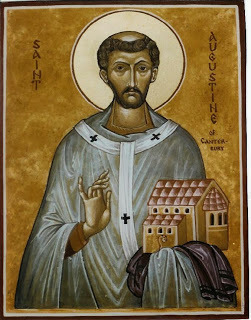
354 Saint Augustine was born. He was one of the earliest Christian theologians, and author of The City of God, and, Confessions, two of the best-known religious writings of all time.
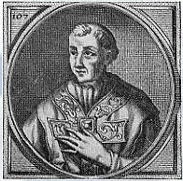
867 Pope Nicholas I died.
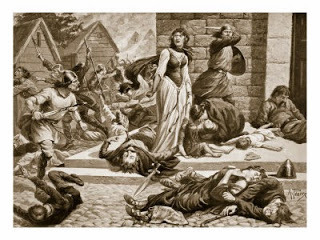
1002 Ethelred the Unready (Ethelred II) ordered the St Brice's Day Massacre - the murder of all Danes in England.
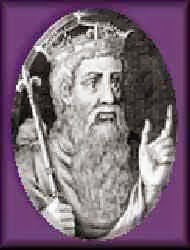
1093, Malcolm III MacDuncan, King of Scots, was killed while laying siege to Alnwick in an invasion of England. He was succeeded by his brother Donald Bane.
1160 Louis VII of France married Adele of Champagne.
1312 King Edward III of England was born.
1553 English Lady Jane Grey and Bishop Cranmer were accused of high treason.
1642 First English Civil War: Battle of Turnham Green – the Royalist forces withdrew in the face of the Parliamentarian army and failed to take London.

354 Saint Augustine was born. He was one of the earliest Christian theologians, and author of The City of God, and, Confessions, two of the best-known religious writings of all time.

867 Pope Nicholas I died.

1002 Ethelred the Unready (Ethelred II) ordered the St Brice's Day Massacre - the murder of all Danes in England.

1093, Malcolm III MacDuncan, King of Scots, was killed while laying siege to Alnwick in an invasion of England. He was succeeded by his brother Donald Bane.
1160 Louis VII of France married Adele of Champagne.
1312 King Edward III of England was born.
1553 English Lady Jane Grey and Bishop Cranmer were accused of high treason.
1642 First English Civil War: Battle of Turnham Green – the Royalist forces withdrew in the face of the Parliamentarian army and failed to take London.
Published on November 13, 2013 05:46
November 12, 2013
Listen to Brenda Perlin on Blog Talk Radio, tonight, November 12, 2013 - 9 pm EST 8 PM CST 7 PM MT and 6 PM PST

 Brenda Perlin11:52am Nov 12 TONIGHT!!!!
Brenda Perlin11:52am Nov 12 TONIGHT!!!!Please join Marsha Casper Cook for a entertaining discussion with Guests John Emil Augustine, Brenda Perlin and their publisher Kim Mutch Emerson on November 12 th at 9PM EST 8PMCST 7PM MT 6PM PST.
Master Koda Select Publishing is an Independent publisher, serving authors with a fresh voice and good work ethic. MKSP is more than a publisher it is a family.
The chat room will be open and if you have any questions or comments please call (714) 242-5259
http://www.blogtalkradio.com/worldofinknetwork/2013/11/13/a-good-story-is-a-good-story
 A GOOD STORY IS A GOOD STORYwww.blogtalkradio.com
A GOOD STORY IS A GOOD STORYwww.blogtalkradio.comPlease join Marsha Casper Cook for a entertaining discussion with Guests John Emil Augustine, Brenda Perlin and Kim Mutch Emerson.
Published on November 12, 2013 11:05
The Phil Naessens Show 11-12-2013 Week Two NBA Power Rankings
http://phillipnaessens.wordpress.com/2013/11/12/the-phil-naessens-show-11-12-2013-week-two-nba-power-rankings/
 On today’s Phil Naessens Show We’re discussing Week 2 NBA power rankings and more with Sonics Rising Managing Editor Kevin Nesgoda!
On today’s Phil Naessens Show We’re discussing Week 2 NBA power rankings and more with Sonics Rising Managing Editor Kevin Nesgoda!
Segment 1: Sonics Rising Managing Editor Kevin Nesgoda joins Phil to discuss his week two NBA Power Rankings numbers 30-16 (online source) plus much more.
Segment 2: Sonics Rising Managing Editor Kevin Nesgoda joins Phil to discuss his week two NBA power rankings numbers 15-1 (online source) plus much more.
 On today’s Phil Naessens Show We’re discussing Week 2 NBA power rankings and more with Sonics Rising Managing Editor Kevin Nesgoda!
On today’s Phil Naessens Show We’re discussing Week 2 NBA power rankings and more with Sonics Rising Managing Editor Kevin Nesgoda!Segment 1: Sonics Rising Managing Editor Kevin Nesgoda joins Phil to discuss his week two NBA Power Rankings numbers 30-16 (online source) plus much more.
Segment 2: Sonics Rising Managing Editor Kevin Nesgoda joins Phil to discuss his week two NBA power rankings numbers 15-1 (online source) plus much more.
Published on November 12, 2013 06:22
Mr. Chuckles Braves the Glades
 Everglades, Exposures and Elise Van Cise...around the Cauldron
Everglades, Exposures and Elise Van Cise...around the Cauldron 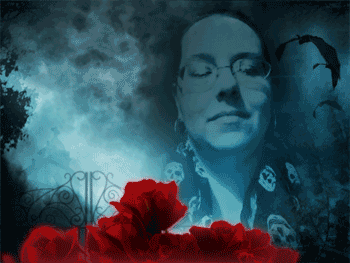
Elise VanCise.
Floridean, mother, freelance photojournalist, award winning author, published in print and digital media. Serious blogger. And all this too...
Elise is a Florida Cracker, with a love for adventure and historic places. NaNoWriMo Municipal Liaison for Lake County, Florida, Founder of Lake Writers of Lake County, Florida. Charter member of Authors in the Park, Member of Marketing for Romance Writers.Org, EPIC Public Relations Team, Member of Coffee Time Romance Brew Crew, Advocate for Public Libraries, Young Writers, Autism, COPD
Just reading what she does on a daily basis is enough to send a lazy man reaching for his sleeping cap. Knowing that, with this kind of action in her life, any window we had to connect was a tiny one in the bathroom rather than one of those giant French ones in the lounge, I picked up the Wizphone post haste and contacted Elise, who was aquaplaning about a swampy delta on one of those cool hovercraft thingies while we nattered. Read the interview in its entirety at: http://greenwizard62.blogspot.com/2013/11/everglades-exposures-and-elise-van.html
Published on November 12, 2013 05:31
History Trivia - Canute the Great dies
November 12
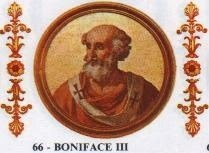
607 Boniface III died. Before he became Pope, Boniface went as a legate to Constantinople and obtained from the emperor Phocas an edict that recognized the See of Rome as the head of all the churches.
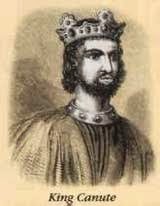
1035 Canute the Great died. King Canute I of England was also King Canute II of Denmark and King Canute of Norway, and was known as "the Great" because of the empire he built in Britain and Scandinavia.
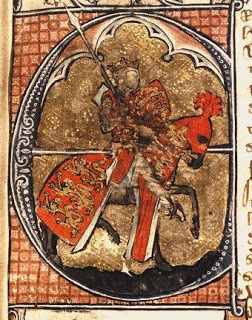
1276 Suspicious of the intentions of Llywelyn ap Gruffydd, the Prince of Wales, English King Edward I resolved to invade Wales. 1
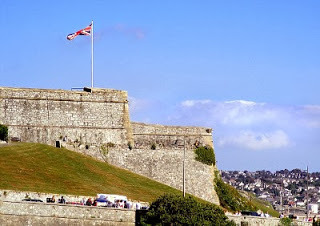
439 Plymouth, England, became the first town incorporated by the English Parliament.

1555 The English Parliament re-established Catholicism.

607 Boniface III died. Before he became Pope, Boniface went as a legate to Constantinople and obtained from the emperor Phocas an edict that recognized the See of Rome as the head of all the churches.

1035 Canute the Great died. King Canute I of England was also King Canute II of Denmark and King Canute of Norway, and was known as "the Great" because of the empire he built in Britain and Scandinavia.

1276 Suspicious of the intentions of Llywelyn ap Gruffydd, the Prince of Wales, English King Edward I resolved to invade Wales. 1

439 Plymouth, England, became the first town incorporated by the English Parliament.

1555 The English Parliament re-established Catholicism.
Published on November 12, 2013 05:26



